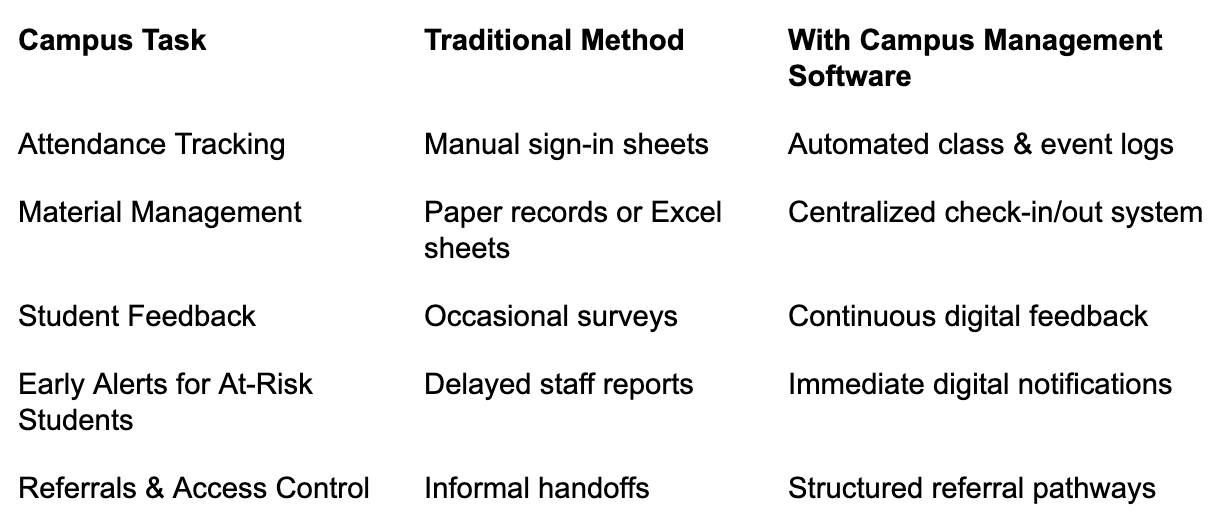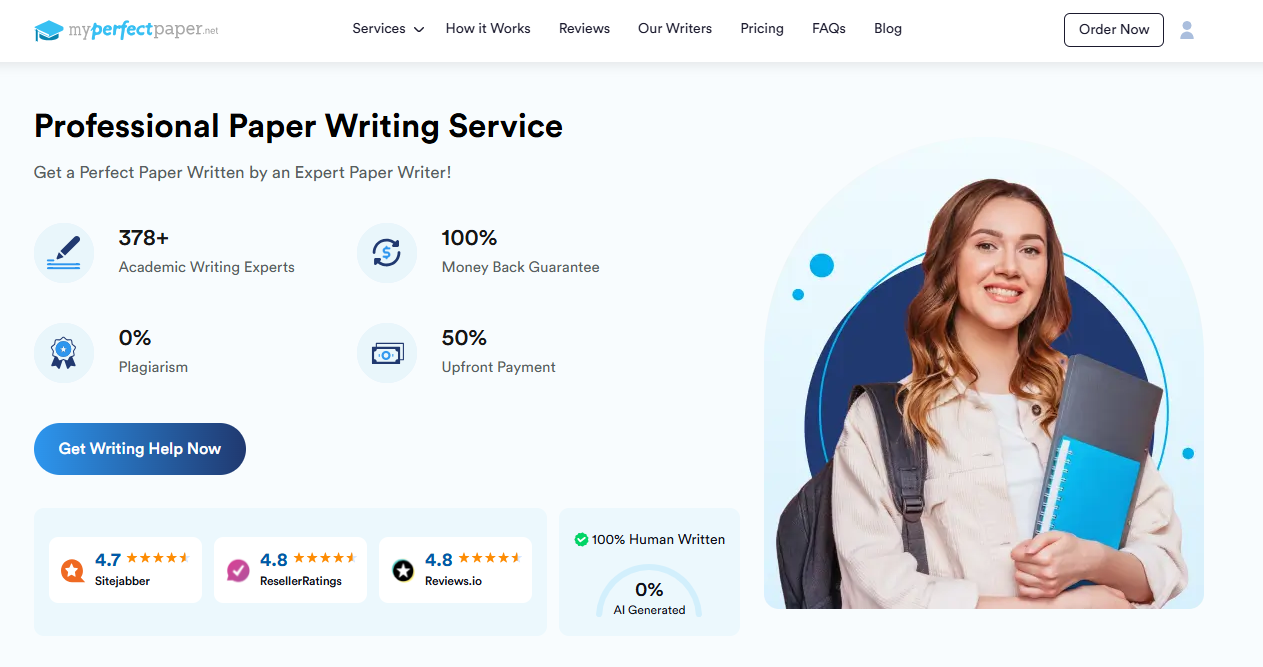For higher-ed professionals, the challenge of coordinating academic services, student support, and administrative tasks has never been greater. The growing complexity of modern institutions requires not only organizational skills but also digital tools that can simplify and connect workflows. Campus management for higher-ed professionals is therefore no longer just about oversight; it is about building integrated systems that can enhance collaboration, improve transparency, and ensure student success.
This is where technology plays a pivotal role. Modern platforms like a campus management system make it possible to monitor attendance, gather feedback, and connect services across departments in a way that was previously unthinkable. Instead of managing fragmented systems or relying on outdated manual processes, universities now have the option to create a single framework that supports both staff efficiency and student engagement.
Why Campus Management Matters Today
The modern university is a complex ecosystem. Academic services, student support centers, libraries, and event organizers all contribute to the student experience, but without coordination, these services can become fragmented. When this happens, students risk missing out on vital support, while staff face duplicated efforts and wasted resources. Effective campus management seeks to solve these issues by providing a unified structure that organizes resources and streamlines operations.
At the heart of this shift is a recognition that student success is directly tied to institutional organization. Attendance tracking, early alerts, and referrals are not simply administrative functions, they are proactive tools to keep students engaged and prevent them from falling behind. By investing in smarter systems, institutions can create pathways that identify at-risk students earlier, respond more quickly to needs, and adapt resources based on feedback.
"Campus management is not only about keeping operations in order, it is about ensuring that every student can access the right support at the right time."
Key Features of Modern Campus Management
When we talk about digital transformation in higher education, it is important to look at the practical tools that are reshaping daily operations. One example is AccuCampus, a cloud-based university administration software designed to bring multiple academic services under one platform. While each institution has unique priorities, the common features offered by such systems highlight what is possible.
AccuCampus, for instance, allows universities to track class and event attendance, ensuring that student engagement is documented and trends can be identified. It also supports material checkout, giving students streamlined access to learning resources while helping staff keep track of inventory. Beyond logistics, the system enables student feedback collection, which plays a vital role in continuous improvement. Features like early alerts and student referrals bridge the gap between students in need and the services that can best support them.
A useful way to understand these features is to compare them with traditional approaches:

By addressing these areas, institutions are not only making their own processes more efficient, they are actively shaping a student experience that feels connected and responsive.
Enhancing User Experience for Staff and Students
One of the most important aspects of any digital tool in higher education is usability. A platform may be rich in features, but if staff or students struggle to navigate it, the benefits are quickly lost. This is why modern systems like AccuCampus focus strongly on a user-friendly interface. Staff can easily sign in, track their hours, or manage schedules without complex training sessions. This accessibility ensures that adoption rates are higher and productivity gains are felt sooner.
For students, the interface matters just as much. Easy-to-use online appointment scheduling, transparent access to tutoring or advising sessions, and the ability to provide direct feedback all contribute to an experience that feels seamless rather than bureaucratic. Students no longer have to juggle multiple platforms or paper-based processes to get the help they need. Instead, they can move through a single, integrated system that simplifies their academic life.
This approach highlights a broader truth in education technology: digital tools must serve both administrators and learners equally. A system that prioritizes ease of use for both groups helps create trust, reduces resistance to change, and ensures long-term success.
Building Student-Centered Action Plans
A particularly impactful area in campus management is the ability to move beyond generic support and develop student-centered action plans. These plans, supported by digital profiles, allow advisors and faculty to tailor interventions based on individual needs. For example, a student who is missing classes can be flagged by the attendance system, while their profile might indicate additional stressors such as heavy course loads or part-time work. Staff can then proactively design an action plan that includes tutoring sessions, advising check-ins, or referrals to counseling services.
The value here lies in personalization. Higher education is diverse, with students arriving from a wide range of backgrounds and circumstances. A one-size-fits-all approach is rarely effective. By creating private student profiles that capture relevant academic and support data, institutions can take proactive measures that address real issues before they escalate.
-
Early alerts provide a signal that action is needed.
-
Referrals connect students to specialized support services.
-
Action plans track progress and ensure accountability.
Together, these elements demonstrate how campus management can evolve from a reactive model to a proactive, student-centered framework.
Collaboration Across Academic Services
Effective campus management does not stop at the level of individual centers or departments. Instead, it depends on collaboration across the entire institution. When tutoring services, libraries, career centers, and advising offices operate in silos, students often feel lost navigating the system. By contrast, when these services are connected through a unified digital platform, students can move between them with ease, and staff can share information seamlessly.
This is where the role of cloud-based solutions becomes particularly important. Because they are not tied to a single computer or office, such systems allow faculty and staff to access information from anywhere, whether they are on campus or working remotely. For students, this means more flexible support, while administrators benefit from the ability to track services holistically.
Collaboration is not only about efficiency; it is also about building a campus culture where support is visible and accessible. When services are connected, students see the institution as a cohesive partner in their academic journey rather than a maze of disconnected offices.
Increasing Visibility of Campus Resources
Even the most advanced services are of little use if students are unaware of them. A recurring challenge for many higher education institutions is making sure students know which resources are available, when they can be accessed, and how they can benefit from them. This is why resource advertising and visibility are emerging as essential components of campus management.
Digital platforms like AccuCampus offer built-in tools to highlight events, tutoring sessions, or workshops directly to students. Beyond just promotion, these tools ensure that resources are integrated into the student's daily digital environment, through apps, notifications, or dashboards. This integration prevents resources from becoming hidden or underutilized and instead encourages students to engage more actively.
In practice, increasing resource visibility has ripple effects: higher attendance at events, better engagement with support services, and stronger overall student satisfaction. For administrators, the ability to track which resources are most used provides valuable data to refine offerings and adapt to evolving needs.
Long-Term Benefits: Retention and Success
At the strategic level, campus management is not only about efficiency; it is also about student retention and long-term success. Institutions are under increasing pressure to ensure that students not only enroll but also persist and graduate. Tools like attendance tracking, feedback collection, and early alerts feed directly into this mission.
By identifying at-risk students earlier, universities can intervene before issues become critical. This proactive approach helps reduce dropout rates, improves academic performance, and strengthens the institution's reputation. In turn, students benefit from a sense of belonging and confidence that their institution is invested in their success.
It is also worth noting that retention has financial implications. Higher retention means more stable tuition revenue, which can then be reinvested into academic and support services. Thus, effective campus management creates a positive cycle of benefits for both students and institutions.
A Look at Proven Solutions
While many institutions design their own frameworks, others look to established solutions to provide the necessary infrastructure. For example, AccuCampus by Engineerica has been in use for years as a cloud-based platform that integrates attendance tracking, feedback, material management, and early alert systems. It demonstrates how comprehensive solutions can bring together multiple aspects of student support and administration in one place.
Importantly, this is not just about technology, but also about the experience behind it. Engineerica has been active in higher education software since the 1990s, which highlights the value of proven track records when selecting tools. Institutions benefit from systems that are already tested, refined, and designed with the realities of higher education in mind.
Moving Forward in Higher Education
As higher education continues to evolve, campus management for higher-ed professionals will remain a critical field. The demands of modern students: flexibility, accessibility, and personalization, require systems that can adapt and respond. Cloud-based platforms, student-centered action plans, and integrated academic services point the way forward.
Ultimately, the strength of a campus lies not only in its classrooms but also in the networks of support that surround students. Academic services, advising, and tutoring centers are most effective when they work together, supported by digital infrastructures that simplify administration while amplifying impact.
"The real value of campus management lies in its ability to turn complex networks of services into a seamless experience where students feel supported, staff feel empowered, and institutions achieve their mission."
This vision places students at the center while ensuring that staff and faculty are equipped with the tools they need to succeed. For higher education professionals, the task is clear: embrace strategies and systems that make campus life more connected, more visible, and more effective.


